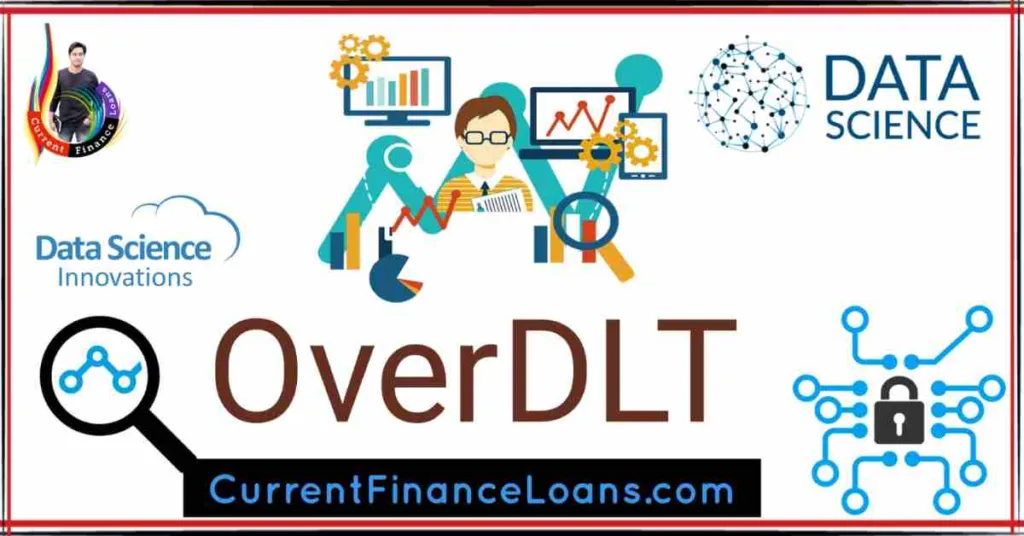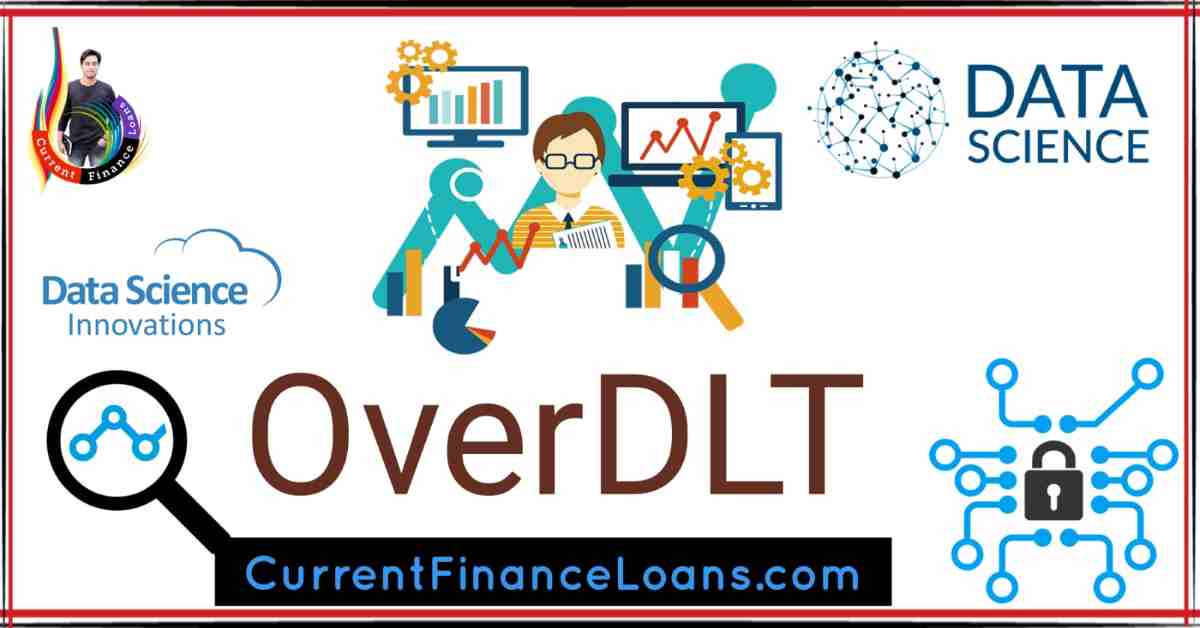
Table of Contents
OverDLT - Transforming Translation with Blockchain
OverDLT is a decentralized translation platform using blockchain technology, offering incentives for users’ translation efforts. It aims to challenge dominant organizations like Google Translate and Microsoft Translate, providing a more transparent and cost-effective solution.
Advantages of OverDLT
- Decentralization prevents single-party control and data manipulation.
- Blockchain ensures tamper-proof and verifiable translations.
- Users can earn rewards, making translation more affordable.

Challenges
- OverDLT is in development, requiring resolution of accuracy and user-friendly interface issues.
- Adoption depends on educating people about benefits and user-friendliness.
OverDLT – Digital Ledger Technology for the Future:-
- OverDLT sets new standards for digital ledgers with enhanced scalability, security, and fast transactions.
- Its potential applications span financial services, supply chain management, healthcare, IoT, and beyond.
- Scalability challenges can be mitigated through network optimization and consensus mechanisms.
- Data quality and reliability demand data validation and governance guidelines.
- Compliance with evolving regulatory frameworks is crucial to avoid legal trouble.
- OverDLT’s distributed ledger may slow down model training and inference but offers better scalability than traditional blockchains. Data integrity and immutability can affect model accuracy, necessitating careful system design and monitoring.
- Organizations should evaluate OverDLT based on their specific use cases, data complexity, and model types to ensure optimal performance.
Introduction
It is a unique product in the world of technology, which is always changing. It has set new standards for digital ledger systems. In this interesting blog post, we go on an adventure to discover the wonders of OverDLT, including its unique features, benefits, and the way it could change industries. Let’s learn more about this amazing mix of confusion and excitement, which is a tribute to human creativity and technological prowess.
How is OverDLT used ?
It is an innovative digital record system that is better than traditional blockchain systems in terms of scalability, security, and speed of transactions. It is different from other blockchains because it uses a unique consensus method. This eliminates the need for energy-intensive mining and makes sure that transactions are quick and cheap.
OverDLT Enhanced Scalability's main features -
OverDLT’s clever design makes scaling easy, which means it can handle a huge number of transactions at the same time without slowing down.
- Perfect Security:- Uses state-of-the-art cryptographic methods to protect the integrity of data and protect against possible threats. This makes change extremely difficult.
- Lightning-Fast Transactions:- It’s new consensus method makes it possible for transactions to happen at lightning speed, which cuts confirmation times by a lot.
- Smart Contracts Redefined:- It takes the idea of “smart contracts” to a whole new level, making it possible for complex deals to run themselves with a level of efficiency that has never been seen before.
OverDLT is more than just an alternative to blockchain. It opens the door to new opportunities in many areas:-
- Financial Services:- It is changing the way the world does business by making cross-border payments almost instant, making remittances easier, and lowering costs.
- Supply Chain Management:- Streamlines supply chains by making them clear and traceable from beginning to end. This makes sure that the goods are genuine.
- Healthcare:- Improves healthcare data handling by keeping patient records secure and making it easy for doctors to share information.
- IoT and Beyond:- Ability to grow gives the Internet of Things (IoT) a boost by making it easier for devices to talk to each other and share data in a secure way.
OverDLT’s world is a symphony of complexity and variety, where confusion and chaos go hand in hand. When you use this technology, you step into a world with a lot of possibilities. As we start this digital era, there are no limits to the ways it could change things and bring about new ideas. lights a fire that drives growth and lets people reach their full potential.
What could go wrong with "OverDLT" in data science ?
With its distributed ledger technology, It has been praised for its potential to change many businesses. But, like any new technology, It has challenges and possible risks, especially in the area of data science. In this article, we’re going to talk about the risks of OverDLT in data science and how to mitigate them.
Risks of Too Much DLT in Data Science
- Privacy and Security of Data:- Even though OverDLT has more privacy and security tools, it is not completely secure. Data kept on a distributed ledger is duplicated across multiple nodes, which makes it more likely that someone will get in without permission or steal data. Also, because the record can’t be changed, it’s hard to follow rules like the General Data Protection Regulation (GDPR) because it’s hard to change or delete personal data when needed.
To deal with these risks, it is important to use strong encryption methods, access controls, and techniques for making data anonymous. Audits and security checks should be done on a regular basis to find and fix any possible holes in the system.
- Ability to grow and work well:- Scalability is often mentioned as one of the best things about OverDLT. But as the data keeps growing, the network might not be able to keep up. When a lot of transactions are processed and a synchronized record is kept across multiple nodes, transaction speeds can slow down and latency can go up.
To reduce these risks, the scalability and efficiency of OverDLT in data science applications can be improved by optimizing the network design, using efficient consensus mechanisms, and putting in place sharding techniques.
- The quality and reliability of data:- Data security is the most important thing in a distributed ledger system like OverDLT. But when there are so many nodes involved in the validation process, it can be tough to make sure that the data is accurate and trustworthy. On the ledger, wrong or fake data can be written down, which hurts the reliability of insights and analyzes based on data.
To reduce these risks, it’s important to put in place data validation tools, data cleaning processes, and consensus methods that put accuracy and reliability of data first. Setting up governance guidelines and data standards can also help keep the data in the OverDLT ecosystem accurate.
- Following the rules:- As OverDLT continues to spread through different businesses, regulatory frameworks are changing to deal with its effects. Compliance with these rules, like data security laws and financial regulations, becomes very important for organizations that use OverDLT to do data science. If you do not observe these rules, you risk legal trouble and damage to your reputation.
Impact of overDLT on Performance and Accuracy ?
It can significantly impair model performance and accuracy. It’s uses distributed ledger technology, which can impair model performance and accuracy.
- It is scalable , The added data and transactions can slow model training and inference, but it has better scalability than typical blockchains. The distributed ledger may increase latency and processing overhead, which may harm real-time or time-sensitive applications.
- Distributed ledger data integrity and quality are also important. For training and forecasting, models need precise data. OverDLT data can be corrupted or tampered with, affecting model performance and accuracy.
- It’s immutability also makes data updates difficult. Modifying or removing data from the distributed ledger might be complicated if errors or new data are found. This can hinder model improvement and information incorporation, reducing refining accuracy over time.
- It’s for data-driven models should carefully evaluate system design and architecture to mitigate these difficulties. They should build rigorous data validation processes, assure distributed ledger data integrity, and carefully monitor and optimize model performance in the distributed environment.
- It may affect model performance and accuracy depending on the use case, data amount and complexity, and model type. Organizations should evaluate and test It to identify and resolve issues and assure model performance and accuracy.
Conclusion
In the world of OverDLT, confusion and chaos come together to create a landscape full of possibilities. This new technology opens the way for a future where security, efficiency, and openness all work together smoothly. As we say goodbye, let’s embrace the power of OverDLT and start a journey that will change businesses, change how things are done, and reveal the real potential of the digital world.
Most Frequently Asked Questions
It’s innovative consensus method, which combines cryptographic algorithms with decentralized validation, gives it the highest level of security possible.
It is different from traditional blockchains because it makes scaling easier, gets rid of energy-intensive mining, and speeds up transaction times.
Absolutely! It is a great way to control the supply chain, make sure it is authentic, and cut down on fraud because it is transparent and can be tracked.
It is made to work well with existing systems, which makes it a flexible solution that can be used in many different businesses.
It’s starts a new era of smart contracts, making it possible for deals to carry out themselves in a way that is more efficient, accurate, and secure.
It could change the banking industry by making cross-border transactions faster, lowering costs, and making the system more secure.
Thanking you soo much For Reading this article
Plz show your love with Sharing this Article to others And comments your suggestions.
How useful was this post?
Click on a star to rate it!
Average rating 5 / 5. Vote count: 2
No votes so far! Be the first to rate this post.
We are sorry that this post was not useful for you!
Let us improve this post!
Tell us how we can improve this post?
